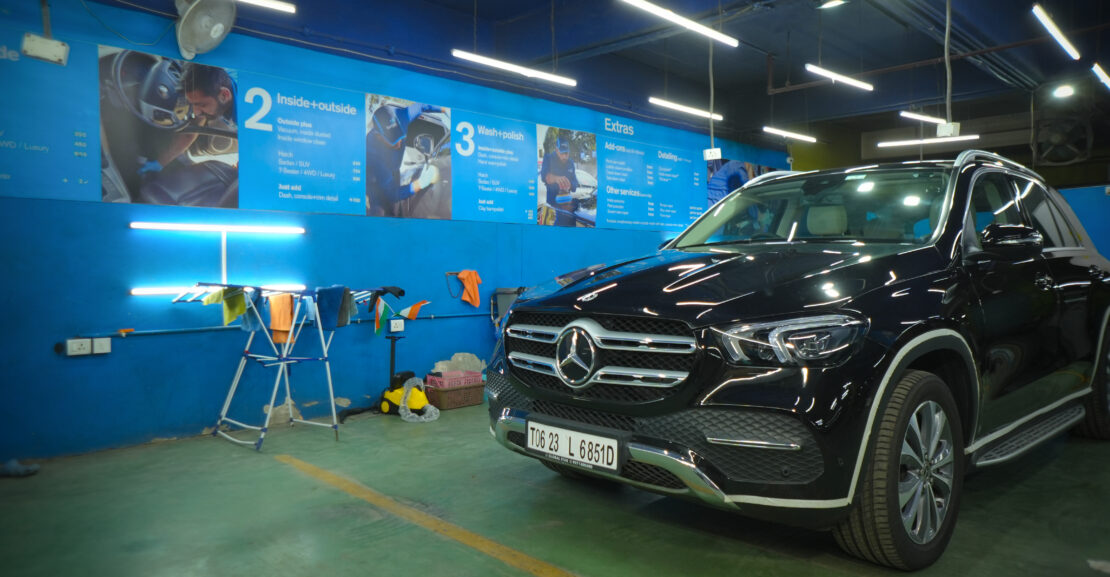Introduction
In the quest for the perfect finish and long-lasting protection, vehicle owners are increasingly turning to ceramic and graphene coatings—two cutting-edge technologies transforming automotive detailing. More than just surface shine, these coatings provide a protective shield that defends against environmental damage, UV rays, chemical contaminants, and even minor scratches.
In “Shielded Shine,” we explore the science, benefits, and differences between ceramic and graphene coatings—and why they represent the future of smart car care.
What is Ceramic Coating?
Ceramic coating is a liquid polymer primarily made from silicon dioxide (SiO₂), which chemically bonds with your vehicle’s factory paint to form a hydrophobic, glass-like shield. Once cured, it becomes a semi-permanent layer that provides:
- Enhanced gloss and depth
- Protection from UV rays, oxidation, and bird droppings
- Easier cleaning due to water and dirt repellency
- Minor scratch resistance
Ceramic coatings typically last 2–5 years, depending on the product quality and aftercare.
Enter Graphene Coating: The Next-Gen Protection
Graphene coating, an evolution in the detailing industry, uses graphene oxide—a single layer of carbon atoms known for its strength, flexibility, and conductivity. When applied as a coating, it offers all the benefits of ceramic with added durability and heat resistance.
Key advantages of graphene coatings:
- Superior hydrophobicity with fewer water spots
- Better chemical and UV resistance
- Anti-static properties—less dust and dirt accumulation
- Enhanced thermal conductivity, reducing paint heat absorption
- Typically lasts up to 5–7 years with proper care
Ceramic vs. Graphene Coating: What’s the Difference?
| Feature | Ceramic Coating | Graphene Coating |
|---|---|---|
| Base Material | Silicon Dioxide (SiO₂) | Graphene Oxide (Carbon) |
| Hydrophobicity | Excellent | Superior |
| Water Spot Resistance | Moderate | High |
| Heat Resistance | Good | Excellent |
| Durability | 2–5 years | 5–7 years |
| Cost | Moderate | Slightly Higher |
| Finish Look | Glossy | Deep, slick gloss |
Application Process: Precision Matters
Both ceramic and graphene coatings require professional application for optimal results:
- Paint Correction – Removing swirls, scratches, and imperfections
- Surface Decontamination – Clay bar, iron removers, etc.
- Panel Wipe – Ensuring a clean base for bonding
- Careful Layering & Curing – Applied section by section and cured under controlled conditions
DIY kits are available but lack the precision and durability of expert applications.
Why Choose Advanced Coatings Over Wax or Sealants?
Unlike traditional wax or synthetic sealants that wear off in weeks, ceramic and graphene coatings are semi-permanent and bond with the paint. They:
- Require less frequent washing
- Eliminate the need for waxing
- Preserve the factory finish for years
- Add resale value by maintaining the vehicle’s condition
They’re ideal for car enthusiasts, luxury vehicle owners, or anyone who values long-term vehicle preservation.
Maintenance After Coating
Even after applying ceramic or graphene coating, regular maintenance is key:
- Use pH-neutral shampoos
- Avoid automatic car washes with harsh bristles
- Apply booster sprays every few months for added slickness
- Perform annual inspections for longevity
Proper care ensures you continue to enjoy that “just-detailed” look for years.
Conclusion
“Shielded Shine” isn’t just about dazzling gloss—it’s about the fusion of science and aesthetics. Whether you choose ceramic or graphene, both coatings offer a future-forward solution for protecting and enhancing your vehicle’s finish. With superior hydrophobic properties, UV resistance, and long-lasting durability, these coatings turn everyday cars into rolling works of art—protected, polished, and primed for performance.

